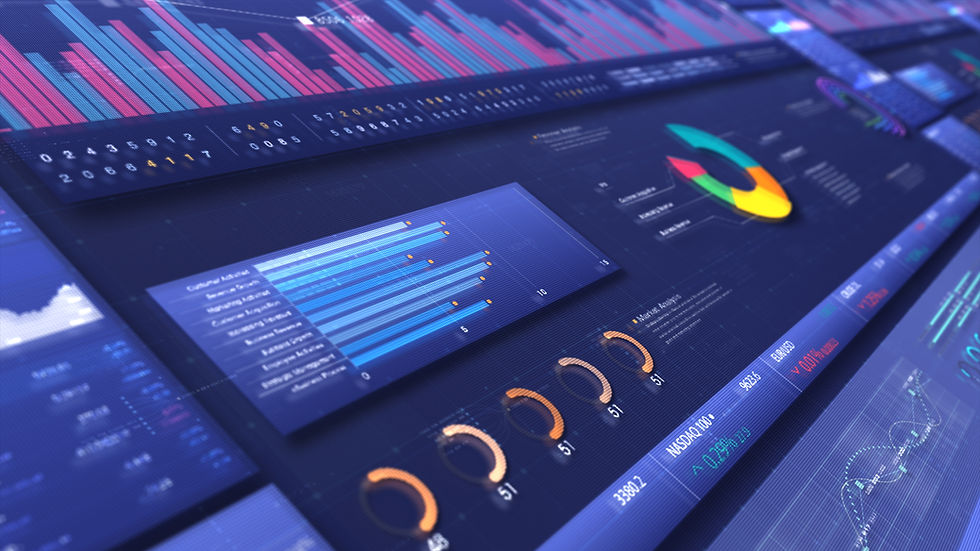The AI-Powered Supply Chain of Tomorrow: In the Example of Fashion Retail
- Abuzar Talibov
- Aug 5, 2023
- 2 min read
Updated: Oct 29, 2023
In general fashion retail industry has various challenges, including the prediction of customer demand and behaviour in the fast-changing trends, proper inventory management, overstocking, markdowns, high return rates, and supply chain complexity.
The mentioned challenges are quite understandable for businesses, however, can we rely on AI-powered algorithms and minimize the effect of those challenges?! Let's deep dive a little to understand the Pros and Cons of the "master" of the future.

Current Situation in Fashion Retail Industry
Currently, companies are aiming to fully adopt the consumer-centric approach and understand the behaviour of the customer so they can shift from a push to a pull market strategy. It became a necessity since the new generation has rising purchasing power but on the other hand, they have specific demand from the market, requesting companies be more sustainable, and transparent in their supply chain, avoid textile waste, focus on diversity etc.
Apart from seeking to be more customer-centric, the industry itself requires optimising the supply chain to be able to react fast to new trends, predict demand efficiently, improve inventory management, and reduce the return rate.
Apparently, the traditional approach like relying on fashion magazines, runway shows, trade fairs, and personal observations to identify trends, managing the inventory based on historical data and seasonability, or considering only the in-store experiences of customers, conducting surveys to understand the customer behaviour, would not let the businesses to be competitive in the market.
AI-Powered Supply Chain
Although human intelligence allowed human beings to achieve everything so far, undeniably it has limits. Artificial Intelligence (AI) will be complementary to that and will definitely handle Big Data efficiently within a short period of time. Considering the fact that the challenges of the supply chain in the fashion industry can be minimized by the fast reaction to the variables of the data, perhaps highly adaptive algorithms of AI can be a solution here.
Recent research from McKinsey estimates that by 2030 AI has the potential to bring 13$ Trillion in global economic activity and the simulation shows that 70% of the companies will adapt at least one type of AI by that time.
Let's categorise how AI can be beneficial for the above-given challenges with the analogies:
Demand Forecasting and Inventory Management
AI can analyse buying trends, social media chatter, and historical sales data to forecast demand accurately. Just like a weather forecast, AI-driven demand forecasting can help retailers stock the right products in the right quantities, ensuring they are well-prepared for customer demands.
Rapidly Changing Trends
AI can analyse vast amounts of data from social media, fashion shows, and consumer behaviour to predict upcoming trends, helping retailers stay ahead and create demand-driven collections.
Seasonality and Timing
AI-powered demand forecasting can optimise inventory levels, reducing overstock and minimising the need for last-minute markdowns.
High Returns Rate
AI can help improve sizing recommendations, reducing the likelihood of returns due to fit issues.
Sustainability Concerns
AI can assess the environmental impact of different materials and production processes, helping brands make more sustainable choices.
Product Design
AI can analyse fashion trends, by combining historical styles with current preferences to suggest innovative designs and assist designers in crafting fresh and appealing fashion concepts.
Personalised Shopping Experience
AI acts as a digital personal shopper, analysing your browsing and purchasing history to suggest items that match your unique taste.
The list can be expanded further if we consider taking into account the different application areas of AI, like generative AI. The article"Generative AI: Unlocking the future of fashion" by McKinsey, categorised the benefits accordingly (the extended list can be found in the given article):
Enrich product ideation by collaborating with AI agents that generate creative options from data
Augment robotic automation for warehouse operations and inventory management through real-time analytics
Create customized marketing content by utilizing unstructured data gathered from consumer profiles and community insights
Structure and generate sales descriptions based on past successful sales posts
Personalize online consumer journey and offers (for example, web pages, product descriptions) based on individual consumer profiles
Optimize store layout planning by generating and testing layout plans under different parameters


